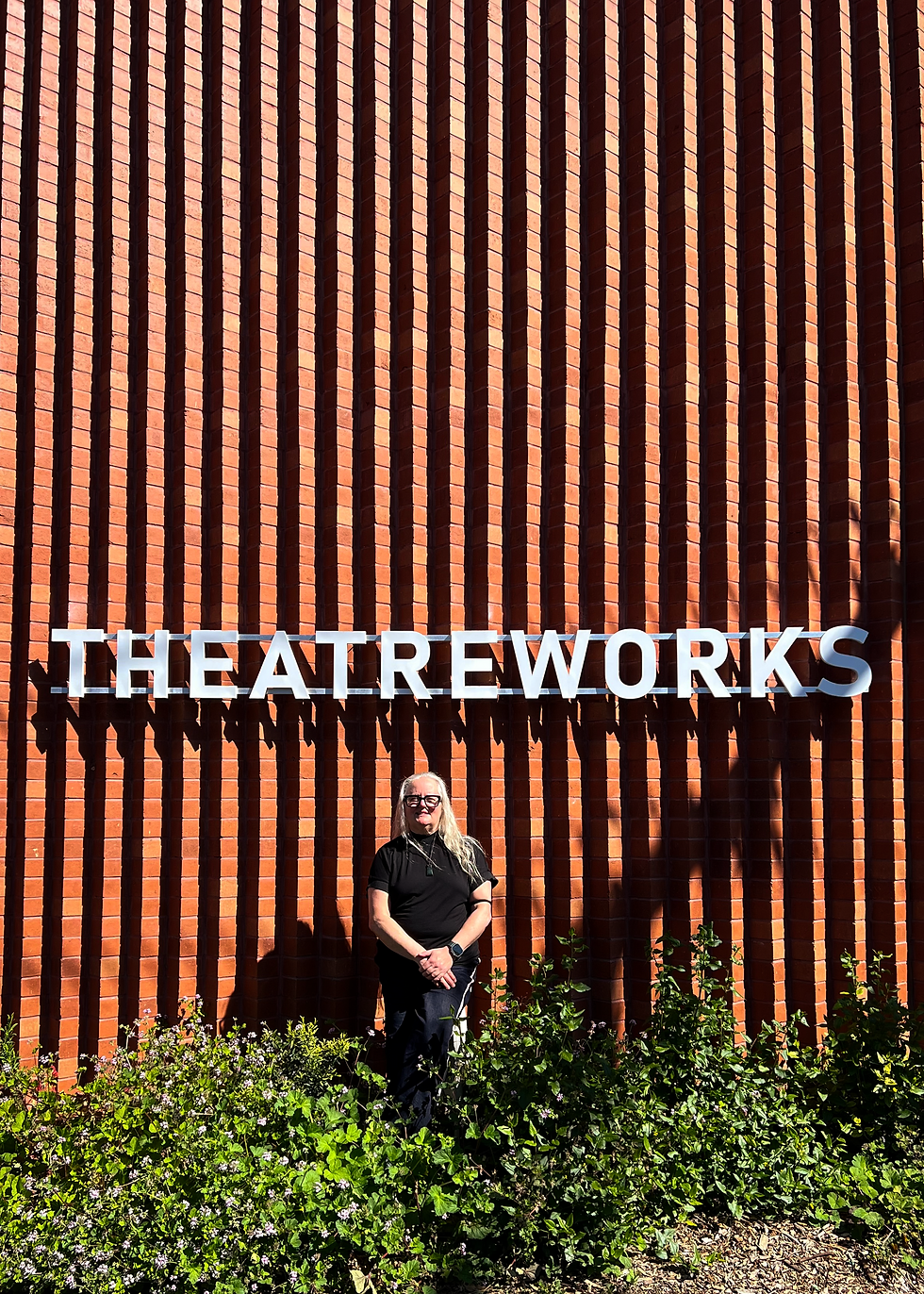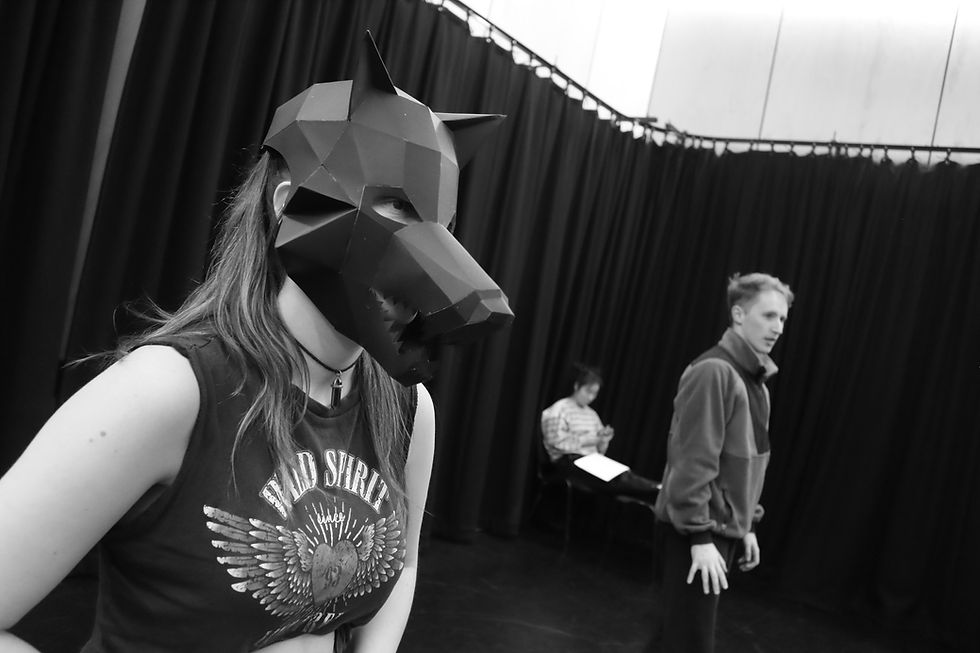In Conversation with Bernadette Trench-Thiedeman
- marketing14050
- Feb 22, 2022
- 4 min read
"I began collecting stories about my father from my family 20 years ago, many years after he passed away. For me that process was a way of connecting to and understanding someone who I missed, but who I didn't truly understand." THIS WEEK we catch up with Bernadette Trench-Thiedeman, creator behind the HIGHLY ANTICIPATED SEASON OF Phantasmagoria.

Q: Tell us about the title of the show and what it means to you.
A: Phantasmagoria is a word that connects into a theatrical tradition that originated in the seances of 18th century Europe. These rituals and staged illusions were popular due to the fascination for making contact with the dead, and a diverse array of theatre makers, spirit mediums, charlatans and 'physicists' toured phantasmagoric shows around the world. They used smoke, mirrors, pre-cinematic projection devices such as the camera obscura and special lighting techniques to bring the dead back to life. For me this was an obvious choice for the show, it's about bringing spirits onto the stage and playing with that idea in a sometimes serious but often absurd way. As a performer in the show it is a deeply personal and somewhat ritualistic concept to work with.
Q: What was your approach in creating a work that draws upon real life experiences?
A: I began collecting stories about my father from my family 20 years ago, many years after he passed away. For me that process was a way of connecting to and understanding someone who I missed, but who I didn't truly understand. There were a lot of difficult times in his life that were obscured from me as a child. I had gathered many interconnected fragments but there were still so many gaps in the story. I was interested in how we imagine into those gaps and try to fill in the missing pieces with conjecture and guesswork as we attempt to make sense of someone's life. I also visited a spirit medium to see if I could make contact with my father. I won't say too much about that because, well, spoilers. My interest in the paranormal, especially ghosts, has a significant influence on me. I never saw her do it, but my grandmother would make contact with the dead using a 'talking' table and my family have many stories about these encounters.
These collected stories sparked off a series of paintings and text that were destined to become a graphic novel (still in process!) Those artworks, along with others I painted over the years, and that process of unearthing were the starting points for writing Phantasmagoria. I was also inspired by Michael Ondaatje's 'Running in the family', a memoir of sorts, along with horror, fantasy and magic realist films, books and performance, especially Alien, Princess Mononoke, The Babadook and Pan's Labyrinth. During my Master of Writing at VCA, I was encouraged to connect with unconscious modes of writing. Some of these processes introduced to me by the writer Sibyl Kempson used a similar philosophy to 'Drawing on the right -hand side of the brain' by Betty Edwards. This process uncovered some deeper personal truths that I hadn't anticipated. There was a gathering of story fragments and memories, but also imagined realities. At the same time, I received more information about my father that was very difficult to come to terms with, but also helped me to understand my childhood, my parents' relationship and why certain events had taken place. It was at this point that I decided the work needed to be fictionalised. Because of the heaviness of the themes, especially family violence and intergenerational trauma, it was also absolutely necessary to make people laugh. It's always necessary to make people laugh. Especially now.
Q: Can you tell us about all the different modes of storytelling used in Phantasmagoria? A: There are a number of different storytelling modes used in Phantasmagoria, naturalistic kitchen sink drama, traditional storytelling with direct address and dreamlike fantasy . It's an experimental non-linear play, it jumps back and forth in time, in and out of different worlds both real and imagined and dances at the junctures where these worlds overlap and co-exist. I also have a background in puppetry (giant, shadow, bunraku) costume and animation that connects directly into the concept of Phantasmagoria through stage magic and illusion, so it was inevitable that these modes are also present. For me the imagined worlds where monsters and strange creatures live are just as true to life, if not more so, than realist kitchen sink drama. Theatre provides the opportunity to express inner emotional worlds that are hidden from view, engaging with all of the senses. I'm interested in how forms such as image projection, puppetry, physical performance, text, sound and smell interact on stage, and in the slippages and combinations of these storytelling modes. Q: What has been a highlight in rehearsals so far? A: I have to say the absolute highlight is finally rehearsing in a room together after 2 years! I'm loving seeing what everyone brings to the show, what Cathy teases out of it, seeing how the performers inhabit different characters and especially seeing their work with the shadow and costume puppets. Some of our performers haven't used puppets before, and after showing them some basic principles they have opened up so many brilliant and fresh ideas. Q: If you could invite anyone to Phantasmagoria, who would it be?
A: Guillermo Del Toro, Hayao Miyazake, Isabel Allende, Ben Okri, Michael Ondaatje, Eddie Vedder, Arundhati Roy, all my friends on the other side of the planet, my father and my grandmother. PHANTASMAGORIA by Bernadette Trench-Thiedeman
2-12 March





Comments